How to Prevent Shoulder Pain From Using a Wheelchair
Whilst not being able to walk can be frustrating, imagine being limited by pain and not being able to use the upper extremity of your body as well. Prevention of shoulder pain from using a wheelchair is important and prevention of this all too common issue is the key.
Shoulder pain in manual wheelchair users occurs in as much as 71% of people (1).
With that in mind here are 7 great tips to prevent those annoying aches and pains.
Tip 1. Power assist devices can prevent shoulder pain from using manual wheelchairs
Struggling to push your chair over uneven, steep or difficult terrain? These devices are great at reducing the load on your shoulder joints and enabling you to do more with less effort.
It allows you to propel yourself effortlessly and is especially good for covering longer distances without causing excessive shoulder load leading to chronic pain.
Power assist devices may be even more important depending on your age, disability, or other contributing factors which make using a wheelchair difficult at times. Start living the life you deserve.
Benefits include:
- Assist you achieve your NDIS goals
- Easier access to the community including work, shopping, sport and social events
- Enable you to become more independent and not rely on others to push you in your wheelchair
- Not have to perform home modifications to allow space for larger electrical chairs
- Can fold your chair down easily into a car and not have to spend money on expensive vehicle modifications or rely on specialized disability transportation vehicles
- POWER ASSIST
- SMART DRIVE MX2+
Tip 2. Exercises for shoulder pain prevention for wheelchair users
Stretching exercises
Stretching is a great way to alleviate pain in the shoulder and prevent pain from occurring in manual wheelchair users.
It can also promote shoulder joint mobility and decrease tightness in muscles around the shoulder joint which can cause pain (8).
Recommended guidelines include holding stretches for approximately 20-30 seconds and repeating 3x for each exercise daily.
Below are 3 QUICK and EASY stretches you can perform in the comfort of your own home:
1. Chest stretch (Pectoralis Major)

2. Side body stretch (Latissimus Dorsi)

3. Shoulder joint stretch (Posterior Deltoid)

Strengthening exercises
Exercises targeted at strengthening the shoulder are an important aspect of shoulder pain prevention in manual wheelchair users.
Strengthening prevents shoulder injuries such as shoulder impingement which is thought to be one of the main causes of pain in wheelchair users (2).
One study investigated the benefits of shoulder strengthening and scapular exercises performed 3x week for 12 weeks.
The exercise dosage was 30 repetitions, 3 sets, with a 30 second rest. Results showed shoulder pain was reduced even in participants with longstanding shoulder pain from manual wheelchair use (2).

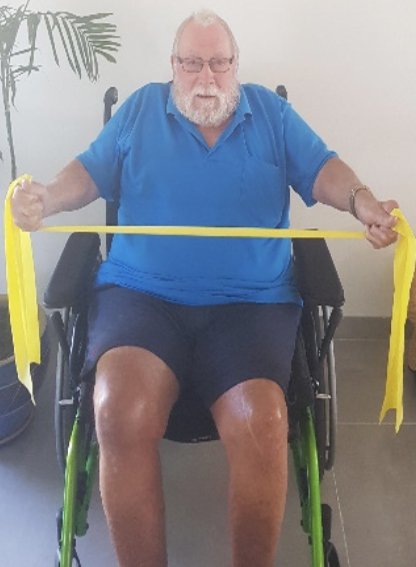


Cardiovascular exercise
Weight loss is not only an important aspect of your overall health, but also a great way to reduce the risk associated with higher shoulder pain levels in individuals with higher BMIs (3).
Loosing weight can prevent shoulder pain by allowing you to use more of your lower extremity, making it easier to transfer and place less weight upon your shoulders.
Weight reduction can occur with an appropriate healthy diet and adequate physical cardiovascular exercise.
Examples of cardiovascular exercises that can be performed in or out of your chair may include:
- Swimming
- Boxing in a seated position
- High repetition weightlifting in sitting or lying position
If you are unsure how to perform cardiovascular exercises as a wheelchair user check out this useful link: How to perform cardio exercises as a wheelchair user
Postural exercises
Posture exercises can also be implemented into a shoulder rehabilitation program and can assist with strengthening the scapula/thoracic region.
Strengthening the scapula shoulder stabilisers has been linked to reducing shoulder pain in wheelchair users (2).
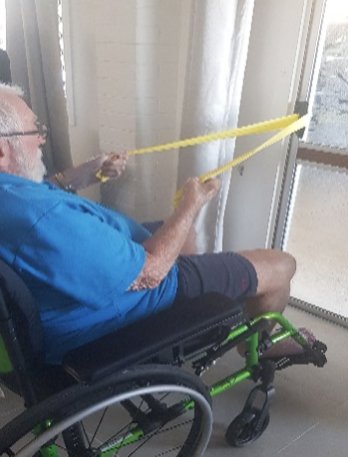

Trigger point exercises
Massage often feels great in those areas that are tight and overused through repetitive shoulder use whilst using a wheelchair.
Self massage through trigger point release is another great way to alleviate those annoying knots in and around the shoulder at the end of the day.
Trigger point balls can be used against a firm surface and applied firmly for approximately 1 min or as tolerated.
Tip 3. Free wheel/front wheel devices to prevent shoulder pain in wheelchair users
The Free Wheel is another great idea when it comes to looking after your shoulders. This device can be used with or without power assist devices.
With wheelchairs the common design flaw is that the front wheels often make it difficult to manoeuvre over different terrains.
This increases the likelihood of excessive shoulder strain resulting in overuse shoulder pain.
Benefits include:
- Light weight- reducing lifting load on shoulders
- Easily attachable to your everyday manual wheelchair
- Improve quality of living by accessing a range of terrains not possible in everyday wheelchairs
- Improving propulsion efficiency preventing shoulder pain
- FREE WHEEL options CLICK HERE
Tip 4. Environment set up for wheelchair users
Using a wheelchair within the home can often come with its difficulties. Setting up the home environment is an important factor in reducing shoulder pain.
It will also make everyday activities a lot easier. Studies have shown repetitive shoulder movements above shoulder height can contribute to increased risk for shoulder pain and impingement in individuals (7).
Examples of ideas within the home for wheelchair users that may assist in prevention of shoulder pain:
- Rearranging cupboards so they are easily accessed at or below shoulder height
- Home modifications for the bathroom shower, wardrobes and other household storage
- Have an occupational therapist come to your home to provide a comprehensive assessment to determine your individual needs
- Having safety doorway mats set up to allow easy access through doorway entrances and to minimize shoulder load. Two options may include:
SAFETY MAT OPTION 1 (is heavy duty and allows all angles to be accessible in a wheelchair)
SAFETY MAT OPTION 2 (great for doorways and small steps within the home)
Tip 5. Maintenance of wheelchairs to prevent shoulder pain
Is your chair gliding effortlessly or does it feel like it needs a tune up?
It is important to ensure that wheelchairs are well looked after so that the wheelchair is working effectively and therefore reduces the load and strain on your shoulders.
When a chair is well looked after, it may reduce your energy expenditure and improve propulsion efficiency, therefore reducing the unnecessary aches and pains that could develop.
Things to consider may include:
- Checking tyre pressures- check recommended tyre pressure guidelines from the supplier
- Ensure the chair is clean with no dust, dirt, grime etc
- Check that the fittings and attachments around the wheelchair frame have not come loose
- Routine 12 monthly maintenance checks through suppliers to ensure everything is in good working order
Tip 6. Correct wheelchair use to prevent shoulder pain
Are you aware of how you propel yourself in your wheelchair? Does this influence shoulder pain?
Wheelchair propulsion hand patterns are typically broken up into 4 distinct phases. These include arc, single loop, double loop and semicircular (as seen in the diagram below).5
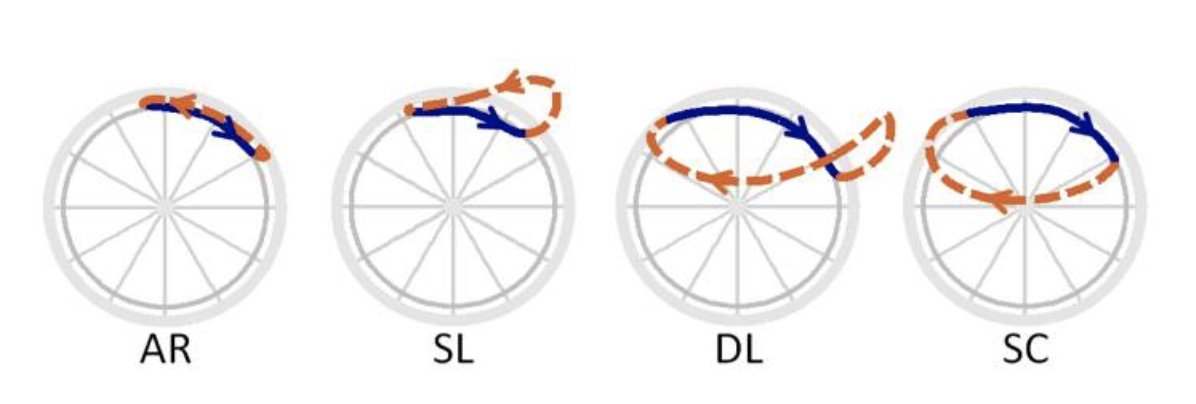
Various studies give us an idea in relation to how these different patterns place demand and stress on the upper body. This can cause shoulder pain in long term manual wheelchair users (5)
This is particularly important as wheelchair users can generate thousands of propulsions per day which certainly adds up over the years (5).
One study looked at these four patterns and the effects on muscle demand and stress on the upper body whilst using a wheelchair on flat ground.
It is recommended that wheelchair users consider using either the single loop or double loop hand propulsion pattern at a self-selected speed on flat terrain (5).
Whilst the research may provide recommendations it is always advisable to listen to your body and do what feels right for you and discuss this with your Physiotherapist.
Tip 7. Transfer correctly using a wheelchair to prevent shoulder pain
How you transfer is another important consideration in preventing shoulder pain during wheelchair use.
It has been indicated that people with better transfer techniques display less shoulder pain during transfers and a reduced likelihood of developing associated pathology within the shoulder (6).
Simple tips to reduce shoulder pain during transfers may include:
- Having the chair as close as possible to the transfer surface so as not to overextend and place extra load onto your shoulders
- Keep arms close to the body at approx 30 degrees to prevent excessive load
- Use a transfer board when required
- Consider smaller less strenuous movements rather than 1 big movement when appropriate
- Minimize unnecessary transfers and plan ahead for tasks that need to be completed in the day
Take Action Today – “You’ll never plough a field by turning it over in your mind.”
The above tips are a great way to conservative shoulder pain management.
If pain persists it is always recommended that you see an appropriate health practitioner.
This will assist you in achieving a clear diagnosis of your pain and a treatment plan which is tailored to your needs.
(FIRST CLASS PHYSIO- MOBILE PHYSIO GOLD COAST)-NDIS REGISTERED PROVIDER
https://firstclassphysio.com.au/
Written by James Doyle B, ExSc.Rhb, M.Phty ©2022
References
1.Mason, B., Warner, M., Briley, S., Gossey-Tolfrey, V., & Vegter, R (2020) Managing shoulder pain in manual wheelchair users: a scoping review of conservative treatment interventions. Clinical Rehabilitation, 34(6), 741-753.
2.Van Straaten , M.G., Cloud , A.B., Morrow , M.M., Ludewig, M.P., Zhao, C.D (2014) Effectiveness of home exercise on pain, function, and strength of manual wheelchair users with spinal cord injury: a high-dose shoulder program with telerehabilitation, Arch Phys Med Rehabil. 95 (10), 1810-1817.
3.Heyward, O.W., Vegter, K.J.R., Groot,S.D., Lucas, van der Woude.H.V (2017) Shoulder complaints in wheelchair athletes: A systematic review. Plos One 12(11).
4.Slowik,J.S., Requejo,S,P., Mulroy, S,J., Neptune, R.R (2016) The Influence of Wheelchair Propulsion Hand Pattern on Upper Extremity Muscle Power and Stress, J Biomech. 49 (9), 1554-1561.
5.Tolerico ML, Ding D, Cooper RA, Spaeth DM, Fitzgerald SG, Cooper R, Kelleher A, Boninger ML. Assessing mobility characteristics and activity levels of manual wheelchair users (2007) Journal of Rehabilitation Research and Development. 44(4), 561–571.
6.Hogaboom, N.S, Worobey, L.A., Boninger,L.M (2016) Transfer Technique Is Associated With Shoulder Pain and Pathology in People With Spinal Cord Injury: A Cross-Sectional Investigation, Arch Phys Med Rehabilitation, 97(10), 1770-6.
7. Leong, H.T., Fu, C.S., He.X, Oh,J.H., Yamamoto.N., Hang.S (2019) Risk factors for rotator cuff tendinopathy: A systematic review and meta-analysis. J Rehabil Med. 51(9), 627-637.
8. Marik.T.L. & Roll, S.C (2016) Effectiveness of Occupational Therapy Interventions for Musculoskeletal Shoulder Conditions: A Systematic Review. Am J Occup Ther. 71(1), 1-11.

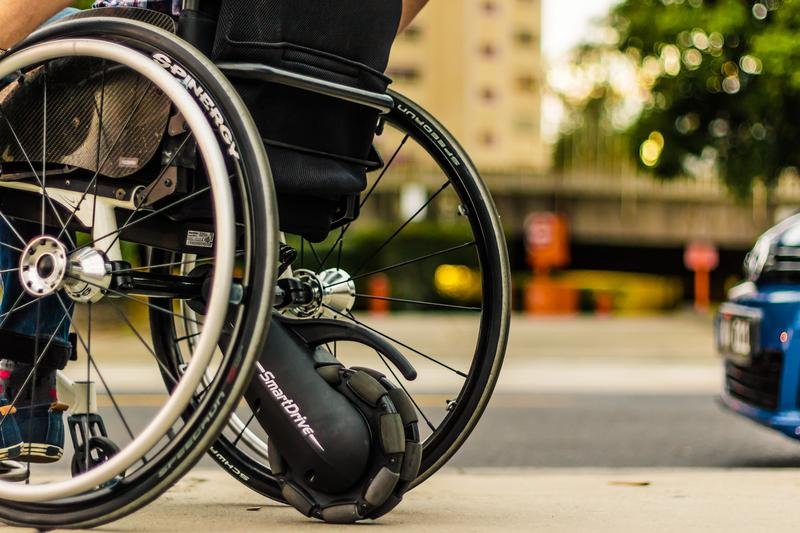
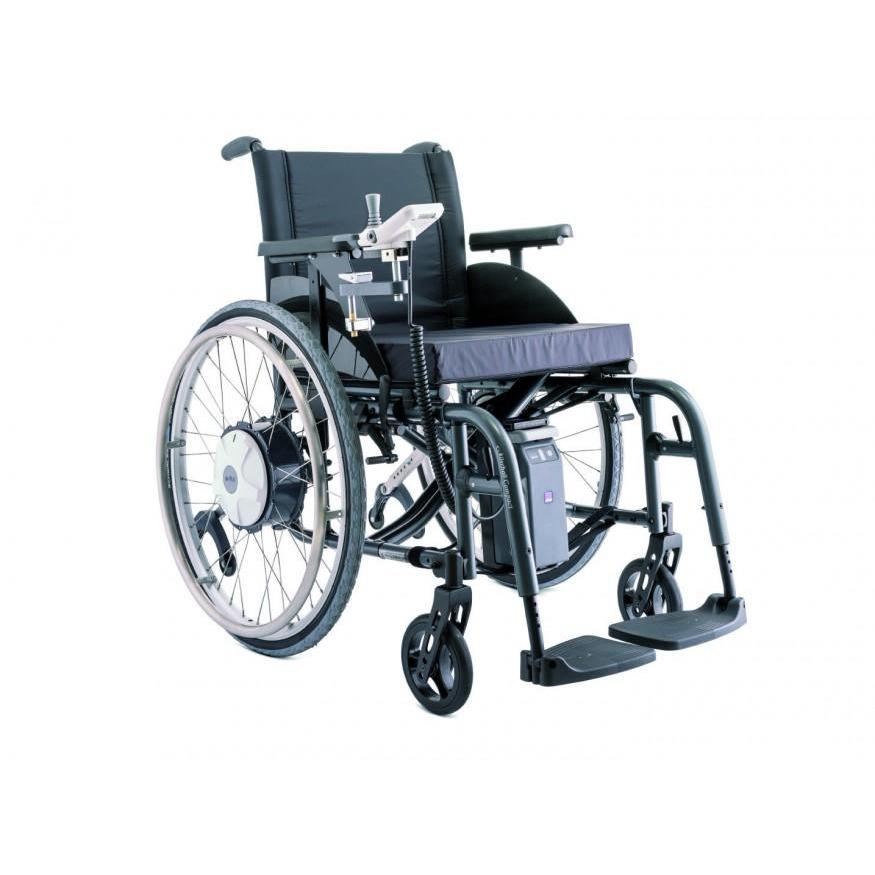

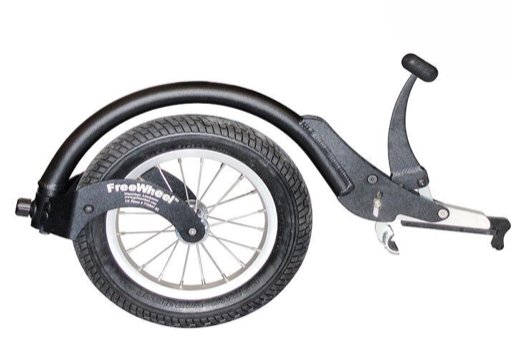
I like that you said that there are wheelchairs that would offer convenient use for your elder and your effort. My neighbor told me the other night that he was planning to buy his aunt a power wheelchair that could provide a 360 and more efficient process. He asked if I had ideas on the best option to consider. I’m glad about this informative article, I’ll tell him he should check the mobility and rehab products online store for more details.